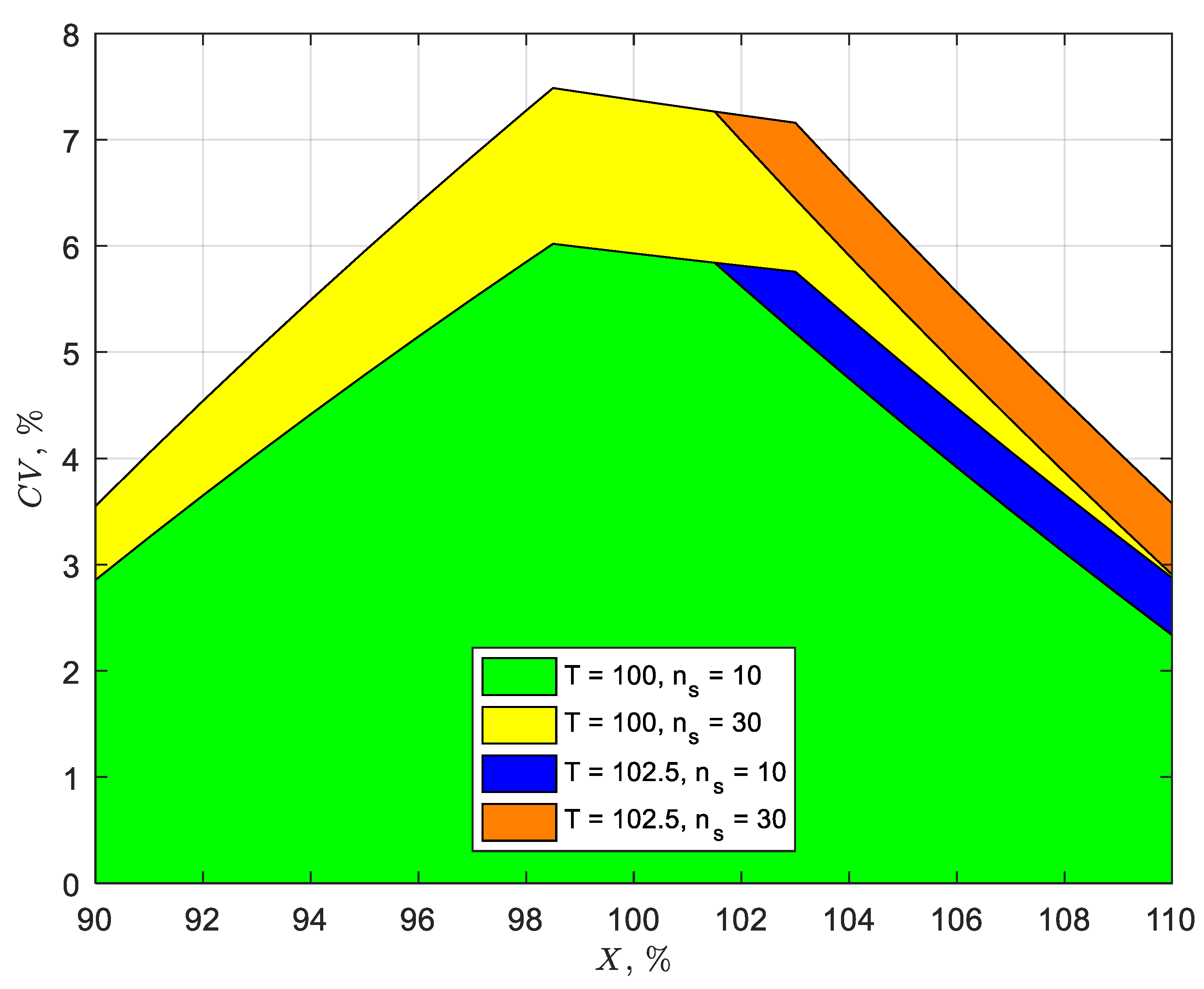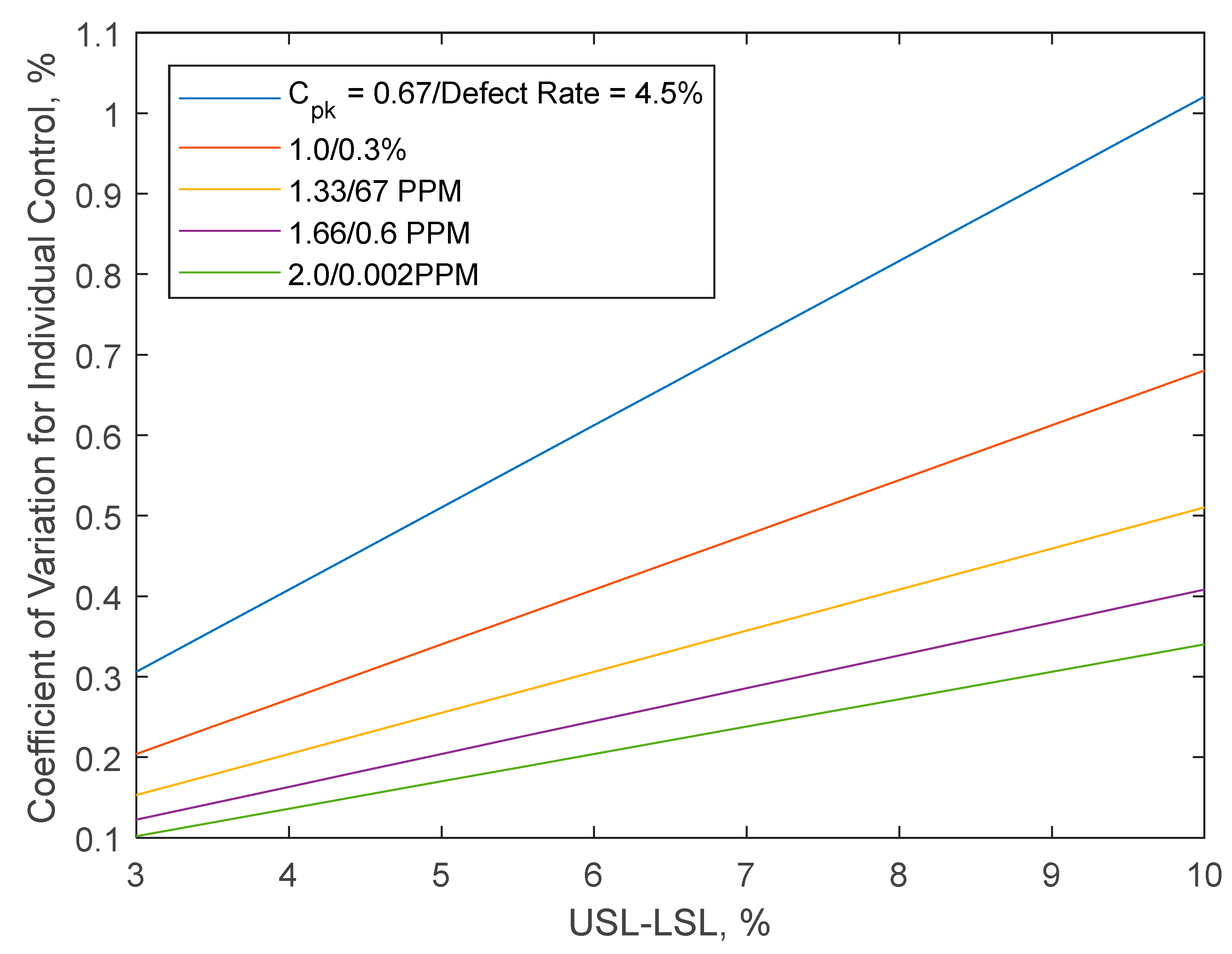Application of Mathematical Models to Determine the Feasibility of Amorphous Drug Layering in Pan Coaters
Abstract
:1. Introduction
2. Methods
2.1. Description of Amorphous Drug Coating Process in Pan Coaters
- Selection of a suitable polymer that is compatible with the API, which can maintain the amorphous state of the API during application of the coating to the tablets, and ensure that once the final dosage form is consumed by the patient, the amorphous nature of the API is maintained right up to the delivery to the primary site of absorption.
- Selection of a suitable solvent system that is capable of dissolving both the polymer and the API. Ideally, the solvent should be a single component system. If a solvent mixture is selected, ideally, a constant boiling (i.e., an azeotrope) mixture should be used or one where the least volatile solvent in the mixture can maintain both the API and polymer in the solution.
- Design of an optimized coating process that allows the coating to be uniformly deposited on the substrate, and allows for the control of the drying process, so that once a dry coating is formed on the substrate, the API still retains its amorphous characteristics.
- Creating a coating solution by dissolving the polymer and the API in the requisite solvent system;
- Loading the tablet cores into the coating pan;
- Warming the tablets until they reach the required temperature;
- Coating the tablets by using the optimal coating process conditions described below;
- Drying the coated tablets at the conclusion of the coating process to remove traces of residual solvent(s);
- Cooling the tablets;
- Emptying the coating pan.
2.2. Acceptance Value and Its Relationship to Accuracy and Precision in Pan Coating Processes
3. Results and Discussion
3.1. Factors Affecting Accuracy (X)
- 0.15% for 98.5–101.5% specification limit on X
- 0.51% for 95–105% specification limit on X.
3.2. Factors Affecting Precision (CV)
3.3. Practical Implications
3.3.1. Performance and Cost Comparison to Pellet Systems
3.3.2. Other Considerations
4. Conclusions
Author Contributions
Funding
Institutional Review Board Statement
Informed Consent Statement
Data Availability Statement
Conflicts of Interest
References
- Boel, E.; Panini, P.; Van den Mooter, G. Development of a Surface Coating Technique with Predictive Value for Bead Coating in the Manufacturing of Amorphous Solid Dispersions. Pharmaceutics 2020, 12, 878. [Google Scholar] [CrossRef] [PubMed]
- Aubert, J.; Mulder, C.J.; Schrör, K.; Vavricka, S.J. Omeprazole MUPS®: An advanced formulation offering flexibility and predictability for self medication. SelfCare 2011, 2, 1–14. [Google Scholar]
- Patel, N.G.; Patel, S.A.; Joshi, A.B. Multiple unit pellet system (MUPS technology) for development of modified release fast disintegrating tablets: A review. J. Pharm. Sci. Innov. 2017, 6, 50–56. [Google Scholar] [CrossRef]
- Chen, W.; Chang, S.-Y.; Kiang, S.; Marchut, A.; Lyngberg, O.; Wang, J.; Rao, V.; Desai, D.; Stamato, H.; Early, W. Modeling of pan coating processes: Prediction of tablet content uniformity and determination of critical process parameters. J. Pharm. Sci. 2010, 9, 3213–3225. [Google Scholar] [CrossRef] [PubMed]
- Gaur, P.K.; Mishra, S.; Gautam, R.; Singh, A.P.; Yasir, M. Film Coating Technology: Past, Present and Future. J. Pharm. Sci. Pharmacol. 2014, 1, 57–67. [Google Scholar] [CrossRef]
- Seo, K.-S.; Bajracharya, R.; Lee, S.H.; Han, H.-K. Pharmaceutical Application of Tablet Film Coating. Pharmaceutics 2020, 12, 853. [Google Scholar] [CrossRef] [PubMed]
- Choi, M.; Porter, S.C.; Macht, B.; Meisen, A. Novel Coating Uniformity Models for Tablet Pan Coaters. AAPS PharmSciTech 2021, 22, 7. [Google Scholar] [CrossRef] [PubMed]
- Choi, M.; Porter, S.C.; Meisen, A. Interrelationships Between Coating Uniformity and Efficiency in Pan Coating Processes. AAPS PharmSciTech 2021, 22, 265. [Google Scholar] [CrossRef] [PubMed]
- Porter, S.C. Troubleshooting appearance-related problems of film coated tablets. Tablets Capsul. 2008, 6, 16–22. [Google Scholar]
- United States Pharmacopeial Convention. General Chapters:<905> Uniformity of Dosage Units; USP35-NF30; United States Pharmacopeial Convention: Rockville, MD, USA, 2012; p. 420. [Google Scholar]
- Sherony, D.F. A model of surface renewal with application to fluid bed coating of particles. Chem. Eng. Sci. 1981, 36, 845–848. [Google Scholar] [CrossRef]
- Pandey, P.; Katakdaunde, M.; Turton, R. Modeling weight variability in a pan coating process using Monte Carlo simulations. AAPS PharmSciTech 2006, 7, E2–E11. [Google Scholar] [CrossRef] [PubMed] [Green Version]
- Kalbag, A.; Wassgren, C. Inter-tablet coating variability: Tablet residence time variability. Chem. Eng. Sci. 2009, 64, 2705–2717. [Google Scholar] [CrossRef]
- Choi, M. Determining the manufacturability of drug-layered tablets. Pharm. Manuf. 2007, 6, 34–42. [Google Scholar]
- Montgomery, D.C. Introduction to Statistical Quality Control, 8th ed.; Wiley: Hoboken, NJ, USA, 2020. [Google Scholar]
- Rege, B.D.; Gawel, J.; Kou, J.H. Identification of critical process variables for coating actives onto tablets via statistically designed experiments. Int. J. Pharm. 2002, 237, 87–94. [Google Scholar] [CrossRef]
- Tobiska, S.; Kleinebudde, P. Coating Uniformity: Influence of Atomizing Air Pressure. Pharm. Dev. Technol. 2003, 8, 39–46. [Google Scholar] [CrossRef] [PubMed]
- Wang, J.; Hemenway, J.; Chen, W.; Desai, D.; Early, W.; Paruchuri, S.; Chang, S.-Y.; Stamato, H.; Varia, S. An evaluation of process parameters to improve coating efficiency of an active tablet film-coating process. Int. J. Pharm. 2012, 427, 163–169. [Google Scholar] [CrossRef] [PubMed]
- Brock, D.; Zeitler, J.A.; Funke, A.; Knop, K.; Kleinebudde, P. Evaluation of critical process parameters for intra-tablet coating uniformity using terahertz pulsed imaging. Eur. J. Pharm. Biopharm. 2013, 85, 1122–1129. [Google Scholar] [CrossRef] [PubMed]
- Boehling, P.; Toschkoff, G.; Knop, K.; Kleinebudde, P.; Just, S.; Funke, A.; Rehbaum, H.; Khinast, J. Analysis of large-scale tablet coating: Modeling, simulation and experiments. Eur. J. Pharm. Sci. 2016, 90, 14–24. [Google Scholar] [CrossRef] [PubMed]
- Podrekar, G.; Kitak, D.; Mehle, A.; Lavrič, Z.; Likar, B.; Tomaževič, D.; Dreu, R. In-Line Film Coating Thickness Estimation of Minitablets in a Fluid-Bed Coating Equipment. AAPS PharmSciTech 2018, 19, 3440–3453. [Google Scholar] [CrossRef] [PubMed]





| Unit Operations | Micronization of API | Solvent Spray Drying | Hot-Melt Extrusion | MUPS | Drug Layering onto Pellets | Drug Layering onto Tablets |
|---|---|---|---|---|---|---|
| Micronization | ✓ | ✗ | ✗ | ✗ | ✗ | ✗ |
| Blending | ✓ | ✓ | ✓ | ✓ | ✗ | ✗ |
| Spray Drying | ✗ | ✓ | ✗ | ✗ | ✗ | ✗ |
| Extrusion | ✗ | ✗ | ✓ | ✗ | ✗ | ✗ |
| Delumping/Milling | ↔ | ↔ | ✓ | ✗ | ✗ | ✗ |
| Tableting | ✓ | ✓ | ✓ | ✓ | ✗ | ✗ |
| Coating (Drug Layering or Other) | ✓ | ✓ | ✓ | ✓ | ✓ | ✓ |
| Encapsulation | ✗ | ✗ | ✗ | ✗ | ✓ | ✗ |
| Total Unit Ops | 4 (5) | 4 (5) | 5 | 3 | 2 | 1 |
Publisher’s Note: MDPI stays neutral with regard to jurisdictional claims in published maps and institutional affiliations. |
© 2022 by the authors. Licensee MDPI, Basel, Switzerland. This article is an open access article distributed under the terms and conditions of the Creative Commons Attribution (CC BY) license (https://creativecommons.org/licenses/by/4.0/).
Share and Cite
Choi, M.; Porter, S.C.; Meisen, A. Application of Mathematical Models to Determine the Feasibility of Amorphous Drug Layering in Pan Coaters. Pharmaceutics 2022, 14, 149. https://doi.org/10.3390/pharmaceutics14010149
Choi M, Porter SC, Meisen A. Application of Mathematical Models to Determine the Feasibility of Amorphous Drug Layering in Pan Coaters. Pharmaceutics. 2022; 14(1):149. https://doi.org/10.3390/pharmaceutics14010149
Chicago/Turabian StyleChoi, Michael, Stuart C. Porter, and Axel Meisen. 2022. "Application of Mathematical Models to Determine the Feasibility of Amorphous Drug Layering in Pan Coaters" Pharmaceutics 14, no. 1: 149. https://doi.org/10.3390/pharmaceutics14010149





